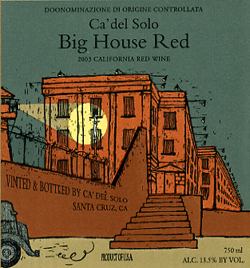 |
|
Wine Details
Price:
Description:
What remains to be said for the wine which inspired a thousand red trucks, antlered mammals and any number of other counterfeit evildoers? This year’s model is built around substantial tranches of syrah, petite sirah and carignane, so despite the Italian conceit on the label, there is more than a faint echo of the Languedoc to be found. The 2003 reprises all the subtle and not-so-subtle charms which have distinguished this wine from the beginning: a potent blast of raspberriosity and licorice; a wide variety of subtle, satellite notes courtesy grenache, barbera, malbec, etc; a soft, plush midsection that would have been contained in earlier days by plaid sans-a-belts; a surprising long and complex finish; and, of course, the oh so stylish Stelvin™ screwcaps which have, two years on chez Doon, acquitted themselves very admirably.
|
|
|